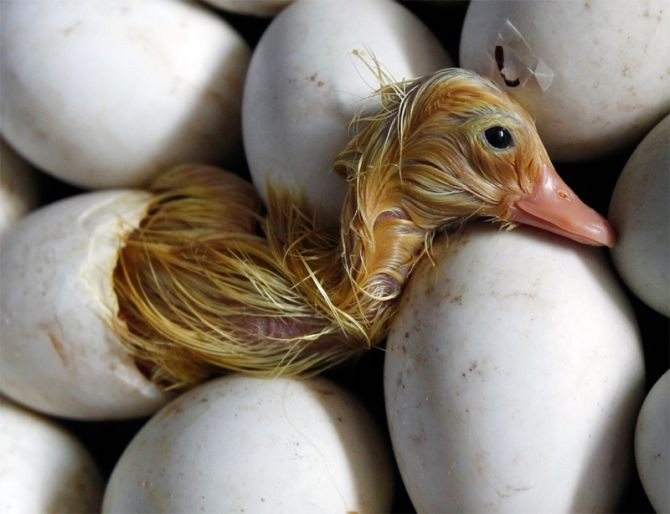Controversial Lethal Bird Flu Paper Finally Published: Should We Panic?

The first of the two controversial research papers on mutant version of lethal bird flu that sparked fears in United States has finally been published on the journal Nature.
H5N1, commonly known as “bird flu”, is deadly to human, killing around 60 percent of those who are infected since 2003, according to the latest data provided by World Health Organization. Until recently, some scientists did not considered bird flu to be transmissible between humans. The Wednesday’s paper, however, debunked the doubts, raising fear and panic in the public.
A team of scientists, led by University of Wisconsin – Madison virologist Yoshihiro Kawaoka, tweaked H5N1 influenza and tested among ferrets. After acquiring four mutations, the team found that the virus could spread between ferrets.
“We identified a reassortant H5 HA/H1N1 virus—comprising H5 HA (from an H5N1 virus) with four mutations and the remaining seven gene segments from a 2009 pandemic H1N1 virus—that was capable of droplet transmission in a ferret model,” wrote the team.
Publication of this paper, along with another paper on similar topic by Rom Fouchier in Netherlands, had been much debated. Some said it is helpful for research and medication; others said it will give leeway for bioterrorists.
In December 2011, the US National Science Advisory Board for Biosecurity (NSABB) said the details of the studies should be redacted from any publications. This decision undoubtedly triggered harsh criticisms that the government is trying to censor scientific discourse and stifle advancement.
Consequently, the board revised the decision in March and allowed publications for the disputed papers. The NSABB recommended full publication of Kawaoka’s paper on Nature, but only the data methods, and conclusions of Fouchier’s paper.
Now that the first paper is readily available in the public, is there any risk that it could turn out to be pandemic?
Kawaoka’s study suggests that some Middle Eastern H5N1 could be just one stabilizing mutation away from spreading between humans.
“If [the mutation] happens – and if H5N1 retains its apparently sky-high mortality rate — we could be in for serious trouble,” reported Bryan Walsh of Time Health Land.
Malik Peiris, virology professor at the University of Hong Kong who wrote a commentary accompanying Kawaoka’s paper in Nature, also expressed his worries.
“There are people who say that bird flu has been around for 16, 17 years and never attained human transmissibility and never will,” said Peiris. “What this paper shows is that it certainly can. That is an important public health message, we have to take H5N1 seriously. It doesn't mean it will become a pandemic, but it can.”
When Fouchier’s paper comes up, it will stir the biosafety people even further, since the mutant bird flu he made is described to be more dangerous than Kawaoka’s. Fouchier’s paper was submitted to Science and awaiting to be published.
“Fouchier’s work would provide a much more direct formula for terrorists to alter H5N1 viruses themselves,” reported Walsh.
Some, however, said the benefits outweigh the risks in publishing the paper.
Arturo Casadevall, a member of NSABB and a microbiologist from Albert Einstein College of Medicine, NY, said publishing the paper may give scientists around the world a better idea how the mechanism work and contribute in preventing.
“We feel the risk is still there, but the benefits now outweigh the risks,” Casadevall said.
None of the infected ferrets in the experiment died, according to the study.
Published by Medicaldaily.com



























